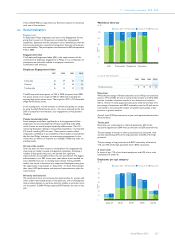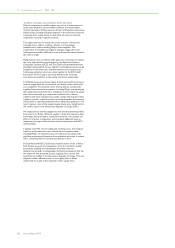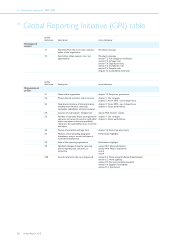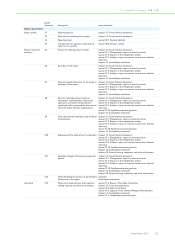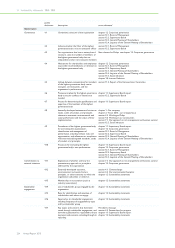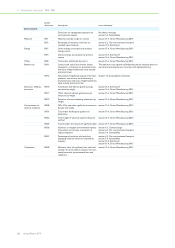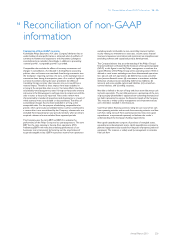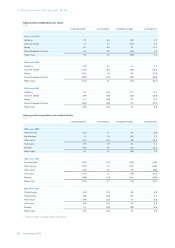Philips 2010 Annual Report Download - page 220
Download and view the complete annual report
Please find page 220 of the 2010 Philips annual report below. You can navigate through the pages in the report by either clicking on the pages listed below, or by using the keyword search tool below to find specific information within the annual report.
15 Sustainability statements 15.6 - 15.6
220 Annual Report 2010
‘Conflict’ minerals: issues further down the chain
Minerals originating in conflict regions can end up in electronics and
many other products such as jewelry, airplanes, and automobiles.
Greater awareness of these issues on the part of the public and end-use
industries has prompted leading companies in the electronics sector to
investigate their supply chains to determine the steps to promote
responsible sourcing of specific minerals.
The supply chain for the metals of concern consists of many tiers,
including mines, traders, smelters, refiners, and component
manufacturers, before reaching Philips’ direct suppliers. The
combination of a lengthy and regularly changing supply chain and
refining process makes it difficult to track and trace the minerals back to
the mine of origin.
Philips believes that an industry-wide approach is necessary to address
this issue and therefore we participate in the Electronic Industry
Citizenship Coalition (EICC) and The Global eSustainability Initiative
(GeSI) Extractives Work Group. The EICC and GeSI represent over 65
companies in the Electronics and Information and Communications
Technology industries who have come together in the EICC-GeSI
Extractives Work Group to positively influence the social and
environmental conditions in the metals extractives supply chain.
In 2010 the research commissioned by the Extractives Work Group to
map the supply chain for tin, tantalum, and cobalt used in electronics
was completed. The research used a tracing method, starting with
suppliers from electronics companies, including Philips, and working up
the supply chain toward the mine. Companies at each step in the supply
chain were contacted (e.g. component manufacturers, refiners,
smelters) and were requested to provide contact information of their
suppliers and their codes of conduct. In a limited number of instances it
was possible to identify a pathway from an electronics product to the
mine; however none of the mapped supply chains were traced back to
the conflict zones in the Democratic Republic of Congo (DRC).
We requested our relevant suppliers to state that they provide conflict-
free minerals to Philips. While all suppliers stated that indeed, to their
knowledge, they provided us conflict-free minerals, we continue our
efforts to increase transparency and investigate additional ways to
determine the origin of the minerals used in cooperation with EICC-
GeSI members.
Together with ITRI, the tin trading and smelting sector, the tantalum
industry, and downstream users of both tin and tantalum metal,
including Philips, we financed a pilot to track minerals and provide
verifiable provenance information from individual mine sites in eastern
DRC; something that has not been possible up to now.
In December 2010 EICC-GeSI announced the launch of the Conflict-
Free Smelter program and completion of the first tantalum smelter
assessment, enabling the identification of smelters that can
demonstrate through an independent third party assessment that the
raw materials they procured did not originate from sources that
contribute to conflict in the Democratic Republic of Congo. This due
diligence enables different parties in the supply chain to better
understand the origin of the materials in their supply chain.







